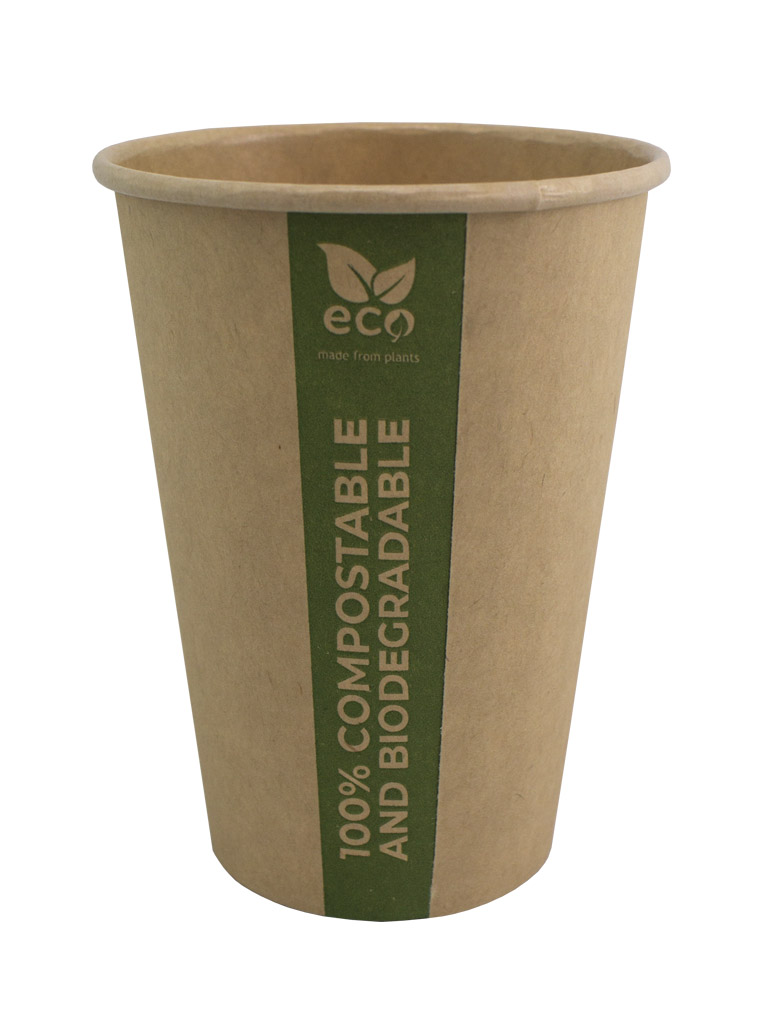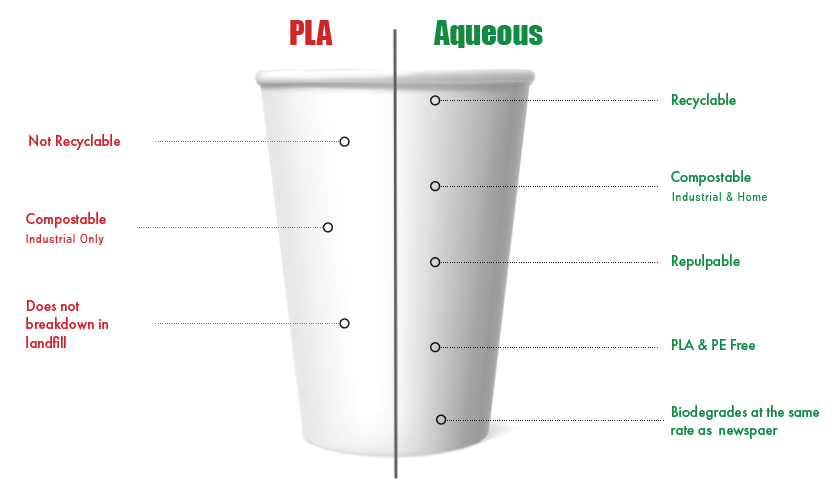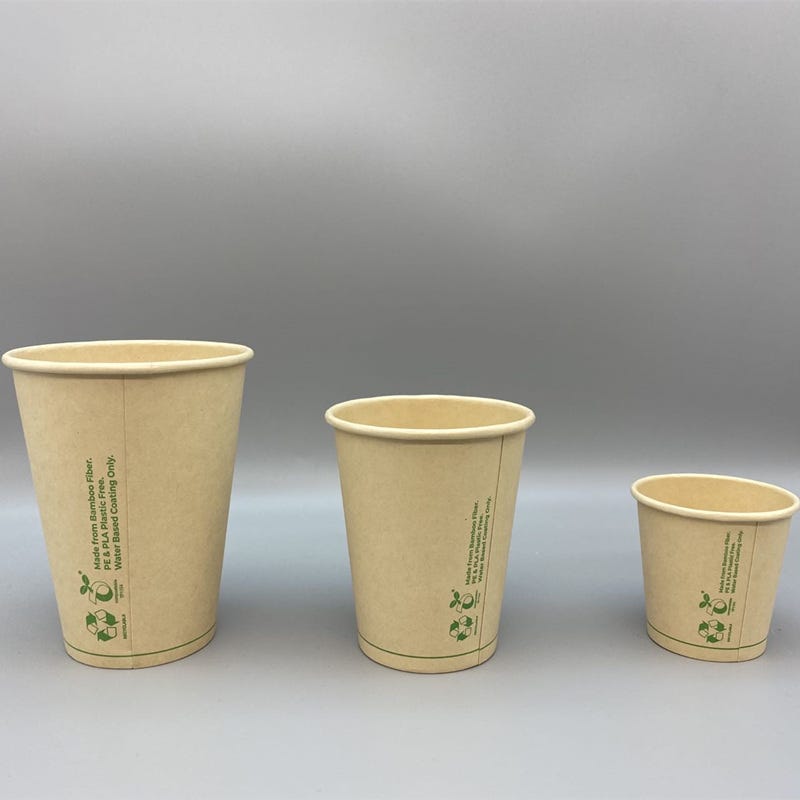Kan PLA-belagt papper återvinnas på ett effektivt sätt?
Hur fungerar återvinning av PLA-belagt papper?
Inledning
PLA (polymjölksyra)-bestruket papper är ett miljövänligt alternativ till traditionellt plastbestruket papper. PLA är en biologiskt nedbrytbar och komposterbar polymer som härrör från förnybara resurser som majsstärkelse. PLA-beläggningen gör pappersprodukter som muggar, brickor och livsmedelsförpackningar mer fuktbeständiga och hållbara. Medan PLA-bestruket papper erbjuder flera miljöfördelar, bland annat minskad deponering av avfall och lägre utsläpp av växthusgaser, men det krävs korrekt återvinning för att maximera dess hållbarhetspotential.
Vad är PLA-belagt papper och hur tillverkas det?
PLA-belagt papper tillverkas genom att ett tunt lager PLA appliceras på pappers- eller kartongytor. PLA-beläggningen ökar papperets styrka, vattenbeständighet och fettbeständighet, vilket gör det lämpligt för olika förpackningsapplikationer. PLA framställs genom att stärkelse fermenteras till sockerarter, omvandlas till mjölksyra och polymeriseras till PLA-pellets. Dessa pellets kan härledas från grödor som majs eller sockerrör. PLA-beläggningen appliceras sedan på papper eller kartong med hjälp av lämplig teknik, t.ex. extruderingsbeläggning eller laminering.
Hur påverkar PLA-beläggningen återvinningsbarheten hos papper?
Även om PLA-belagt papper är biologiskt nedbrytbart och komposterbart innebär dess återvinningsbarhet vissa utmaningar. PLA-beläggningen kan förorena återvinningsströmmarna om den inte separeras ordentligt från andra pappersprodukter under återvinningsprocessen. De flesta återvinningsanläggningar är inte utrustade för att hantera separering och bearbetning av PLA-belagt papper på grund av den specialutrustning och de processer som krävs. Därför avleds PLA-belagt papper ofta från återvinningsströmmarna och skickas till deponier eller komposteringsanläggningar.
Vilka är de nödvändiga stegen för att återvinna PLA-belagt papper?
- Insamling och sortering: PLA-belagda pappersprodukter ska separeras från vanliga pappersprodukter under insamlingen för att förhindra kontaminering. Särskilda återvinningskärl eller separata insamlingssystem kan implementeras för att säkerställa korrekt separering.
- Depolymerisering: PLA-beläggningen depolymeriseras genom en kemisk eller enzymatisk process för att bryta ned den till de monomerer som den består av, nämligen mjölksyra. Detta gör det lättare att separera från pappersfibrerna.
- Avfärgning: Papperet avfärgas med hjälp av traditionella metoder eller särskilda kemikalier för att avlägsna bläck och andra beläggningar som finns på papperet.
- Fiberåtervinning: Pappersfibrerna bearbetas mekaniskt eller kemiskt för att separera dem från PLA-beläggningen och eventuella kvarvarande föroreningar. De återvunna pappersfibrerna kan sedan användas för att tillverka nya pappersprodukter.
Vilka återvinningsanläggningar tar emot PLA bestruket papper?
Inte alla återvinningsanläggningar accepterar PLA-belagt papper på grund av de specialiserade processer som krävs för återvinning. Det finns dock specifika anläggningar som kan bearbeta PLA-belagt papper och separera PLA-beläggningen från pappersfibrerna. Dessa anläggningar är ofta utrustade med nödvändig utrustning, t.ex. depolymerisationsreaktorer och specialiserade sorteringssystem, för att hantera återvinning av PLA-belagt papper. Det är viktigt att kontrollera med lokala återvinningsanläggningar eller avfallshanteringsbyråer för att avgöra om de accepterar PLA-belagt papper.
Vilka vanliga problem uppstår under återvinningsprocessen av PLA-belagt papper?
Återvinningsprocessen för PLA-belagt papper innebär flera utmaningar och överväganden:
- Separering och sortering: Korrekt separering av PLA-belagt papper från vanliga pappersprodukter är avgörande för att förhindra kontaminering. Om det inte separeras korrekt kan PLA-beläggningen förorena de återvunna pappersfibrerna, vilket påverkar kvaliteten på den slutliga återvunna produkten.
- Brist på infrastruktur: Den begränsade tillgången på återvinningsanläggningar som kan bearbeta PLA-belagt papper innebär utmaningar för återvinningen. Detta kan leda till begränsade återvinningsalternativ och ökat beroende av deponier eller komposteringsanläggningar.
- Överväganden om kostnader: Den specialutrustning och de specialprocesser som krävs för återvinning av PLA-belagt papper kan öka kostnaden för återvinningsprocessen jämfört med traditionell pappersåtervinning. Detta kan påverka genomförbarheten och skalbarheten för initiativ för återvinning av PLA-belagt papper.
Detaljerad jämförelse mellan återvinningsprocessen för PLA-belagt papper och traditionellt papper
| Traditionell pappersåtervinning | Återvinning av PLA-belagt papper |
|---|---|
| Insamling och sortering | Insamling och sortering |
| Repulping | Depolymerisering |
| Screening och rengöring | Avsänkning |
| Avsänkning | Fiberåtervinning |
| Raffinering och papperstillverkning |
Hur man förbereder och sorterar PLA-belagt papper för återvinning
För att förbereda PLA-belagt papper för återvinning är det viktigt att separera det från andra pappersprodukter för att förhindra kontaminering. Detta kan göras genom korrekta sorterings- och insamlingsmetoder. Här följer några riktlinjer för förberedelse och sortering av PLA-belagt papper för återvinning:
- Separera PLA-belagt papper: Håll PLA-belagt papper åtskilt från vanliga pappersprodukter under insamlingen. Detta kan uppnås genom separata insamlingskärl eller särskilda återvinningsströmmar.
- Undvik kontaminering: Se till att PLA-belagt papper inte förorenas av matavfall, vätskor eller andra icke återvinningsbara material. Kontaminering kan påverka papperets återvinningsbarhet och kvaliteten på den återvunna produkten.
- Följ lokala riktlinjer för återvinning: Kontrollera med lokala återvinningsanläggningar eller avfallshanteringsorgan för specifika riktlinjer för återvinning av PLA-belagt papper. De kan ge instruktioner om hur man förbereder och sorterar PLA-belagt papper för återvinning i ditt område.
Genom att följa dessa riktlinjer kan du hjälpa till att maximera återvinningsbarheten för PLA-belagt papper och bidra till ett mer hållbart avfallshanteringssystem.
Sammanfattning av recensionen
- PLA-bestruket papper tillverkas genom att ett tunt lager PLA appliceras på pappers- eller kartongytor.
- PLA-beläggningen förbättrar papperets styrka, vattenbeständighet och fettbeständighet.
- PLA-belagd papper är biologiskt nedbrytbart och komposterbara, vilket minskar deponiavfall och utsläpp av växthusgaser.
- Återvinning av PLA-belagt papper innebär dock utmaningar på grund av den specialutrustning och de processer som krävs för separering och bearbetning.
- Det krävs särskilda återvinningsanläggningar för att återvinna PLA-belagt papper och separera PLA-beläggningen från pappersfibrerna.
- Korrekt sortering och förberedelse av PLA-belagt papper för återvinning är avgörande för att förhindra kontaminering och säkerställa dess återvinningsbarhet.
Vilka är de miljömässiga fördelarna och utmaningarna med PLA-bestruket papper?
Översikt över miljöfördelarna med att använda PLA-bestruket papper
PLA-bestruket papper erbjuder flera miljöfördelar jämfört med traditionella petroleumbaserade material. En av de viktigaste fördelarna är att PLA härrör från förnybara resurser, till exempel majsstärkelse, vilket gör det till ett hållbart och miljövänligt val. Genom att använda PLA-bestruket papper kan företag minska sitt beroende av fossila bränslen och bidra till en mer hållbar framtid.
Dessutom har PLA-produktionen ett lägre koldioxidavtryck och kräver mindre energi jämfört med produktionen av traditionella plaster. Enligt studier använder PLA-produktionen 65% mindre energi och genererar 68% mindre utsläpp av växthusgaser. Denna minskning av energiförbrukningen och utsläppen av växthusgaser bidrar till att mildra effekterna av klimatförändringarna och stöder övergången till en ekonomi med låga koldioxidutsläpp.
Dessutom kan PLA-belagt papper spela en viktig roll för att minska deponeringsavfallet. PLA är biologiskt nedbrytbart och komposterbart, vilket innebär att det kan brytas ned naturligt med tiden. Denna egenskap gör att PLA-belagt papper kan avledas från deponier och bearbetas i kommersiella komposteringsanläggningar, där det kan brytas ned inom 90 till 180 dagar. Genom att använda PLA-bestruket papper kan företag bidra till att minska avfallsmängden och främja principerna för cirkulär ekonomi.
Hur står sig PLA-produktionen jämfört med traditionella plaster när det gäller koldioxidavtryck och energieffektivitet?
Produktionen av PLA har ett betydligt lägre koldioxidavtryck jämfört med traditionella petroleumbaserade plaster. Traditionella plaster utvinns ur icke-förnybara resurser, nämligen fossila bränslen, som släpper ut betydande mängder koldioxid och andra växthusgaser under sin produktion. PLA, å andra sidan, tillverkas av förnybara resurser, såsom majsstärkelse, vilket bidrar till att minska koldioxidutsläppen.
Dessutom är energieffektiviteten vid PLA-produktion överlägsen den för traditionella plaster. Tillverkningen av PLA kräver 65% mindre energi jämfört med tillverkningen av petroleumbaserade plaster. Denna energiminskning beror på att PLA utvinns ur förnybara resurser och genomgår en annan tillverkningsprocess.
Genom att välja att använda PLA kan företag avsevärt minska sitt koldioxidavtryck och sin energiförbrukning och därmed bidra till en mer hållbar och miljövänlig industri.
Bionedbrytbara och komposterbara materials roll för att minska deponeringsavfallet
Biologiskt nedbrytbara och komposterbara material, som PLA-bestruket papper, spelar en avgörande roll för att minska deponeringen av avfall. I traditionella avfallshanteringssystem samlas icke-biologiskt nedbrytbara material, inklusive petroleumbaserad plast, på deponier och bidrar till miljöförstöring. Det tar hundratals år för dessa material att brytas ned, vilket leder till ökad användning av deponiutrymme och potentiell förorening av grundvattnet.
Biologiskt nedbrytbara och komposterbara material som PLA-bestruket papper kan däremot brytas ned naturligt med tiden utan att lämna skadliga rester. Denna egenskap gör att de kan avledas från deponier och bearbetas i särskilda komposteringsanläggningar. I dessa anläggningar kan materialen brytas ned inom 90 till 180 dagar och i slutändan förvandlas till näringsrik kompost som kan användas för att berika jorden och stödja växttillväxt.
Genom att främja användningen av biologiskt nedbrytbara och komposterbara material som PLA-bestruket papper kan företag bidra till att minska avfallsmängden, berika jorden och skapa ett mer hållbart avfallshanteringssystem.
Kan PLA-bestruket papper brytas ned biologiskt i hemkompost?
PLA-bestruket papper har utformats särskilt för att brytas ned biologiskt i industriella komposteringsanläggningar, där särskilda temperatur- och fuktighetsförhållanden upprätthålls för att underlätta nedbrytningen. Vid hemkompostering kan det dock ta längre tid för PLA-belagt papper att brytas ned på grund av lägre temperaturer och varierande komposteringsförhållanden.
Den fullständiga biologiska nedbrytningen av PLA-belagt papper i hemkompostering kan ta upp till 90 dagar eller mer, beroende på olika faktorer som temperatur, fuktinnehåll och förekomst av mikroorganismer. Det är viktigt att notera att hemkompostering är mindre reglerad än industriell kompostering, vilket kan leda till långsammare nedbrytningshastigheter.
Även om PLA-belagt papper så småningom kan brytas ned biologiskt i en hemkompost, rekommenderas att det om möjligt kasseras i särskilda komposteringsanläggningar för att säkerställa en mer effektiv och snabb nedbrytning.
Vilka är begränsningarna och utmaningarna med PLA:s biologiska nedbrytbarhet?
Även om PLA erbjuder många miljöfördelar finns det begränsningar och utmaningar i samband med dess biologiska nedbrytbarhet. En av de främsta utmaningarna är att den biologiska nedbrytningen av PLA kräver specifika förhållanden som ofta inte finns i naturliga miljöer. Industriella komposteringsanläggningar erbjuder en idealisk miljö för nedbrytning av PLA, med kontrollerad temperatur, fukt och mikrobiell aktivitet. Dessa anläggningar är dock inte lika allmänt tillgängliga som vanliga avfallshanteringssystem.
En annan begränsning är att PLA kräver en viss nivå av värme och fukt för effektiv biologisk nedbrytning. Vid hemkompostering, där temperaturen kanske inte når upp till den nivå som krävs för snabb nedbrytning, kan det ta längre tid för PLA att brytas ned. Dessutom kan felaktiga avfallshanteringsmetoder, som att blanda PLA-belagt papper med icke-komposterbart avfall, hindra den biologiska nedbrytningsprocessen.
För att övervinna dessa utmaningar är det viktigt att utbilda konsumenter och företag om korrekta metoder för bortskaffande av PLA-bestruket papper och främja användningen av särskilda komposteringsanläggningar. Dessutom pågår forskning och utveckling för att förbättra den biologiska nedbrytbarheten hos PLA och för att utforska alternativa biologiskt nedbrytbara material som är bättre lämpade för naturliga miljöer.
Analys av PLA:s påverkan på naturliga ekosystem
Även om PLA-bestruket papper i allmänhet anses vara miljövänligt är det viktigt att analysera dess påverkan på naturliga ekosystem på ett heltäckande sätt. Ett potentiellt problem är den ökade efterfrågan på råmaterial, t.ex. majsstärkelse, som används i PLA-produktionen. Denna ökade efterfrågan kan leda till avskogning, förlust av livsmiljöer och förändringar i markanvändningen, vilket kan påverka den biologiska mångfalden och ekosystemen.
Dessutom kan bortskaffande av PLA-belagt papper i naturliga miljöer, där det inte finns några särskilda komposteringsförhållanden, leda till nedskräpning och påverka livsmiljöer för vilda djur och växter. Felaktig avfallshantering kan leda till att PLA ackumuleras i ekosystemen, vilket kan störa naturliga processer och skada djurlivet.
För att mildra dessa potentiella effekter är det viktigt att främja ansvarsfulla inköp av råvaror för PLA-produktion och utveckla omfattande avfallshanteringssystem som säkerställer korrekt bortskaffande och bearbetning av PLA-belagt papper. Dessutom kan fortsatt forskning och innovation inom området biologiskt nedbrytbara material bidra till att lösa dessa problem och utveckla mer hållbara alternativ.
Sammanfattningsvis erbjuder PLA-belagt papper olika miljöfördelar, bland annat minskat koldioxidavtryck, energieffektivitet och avfallsminskning. Utmaningar relaterade till biologisk nedbrytbarhet och potentiell påverkan på naturliga ekosystem måste dock noga övervägas och hanteras. Genom att främja ansvarsfull användning, bortskaffande och ytterligare innovation kan PLA-belagt papper fortsätta att vara ett livskraftigt och hållbart alternativ i strävan efter miljövänliga förpackningsmaterial.
Utforska alternativa biologiskt nedbrytbara och komposterbara ytbeläggningar till PLA
Alternativa ytbeläggningar
PHB (polyhydroxibutyrat)
PHA (polyhydroxyalkanoater) är en biopolymer som kan utvinnas från förnybara källor, inklusive växtoljor och sockerrör. PHA-beläggningar ger liknande fuktbeständighet och hållbarhet som PLA, men med ytterligare fördelar. PHA är t.ex. lättare att kompostera i hemkompostsystem, vilket minskar behovet av specialiserade komposteringsanläggningar. Dessutom har det visat sig att PHA har ett lägre koldioxidavtryck än PLA under produktionen, vilket gör det till ett mer hållbart val.
Cellulosa-baserade ytbeläggningar
Ett annat alternativ är cellulosabaserade ytbeläggningar. Dessa beläggningar härrör från växtfibrer och erbjuder liknande fördelar som PLA när det gäller fuktbeständighet och hållbarhet. Cellulosabaserade ytskikt är biologiskt nedbrytbara och komposterbara och kan lätt brytas ned av mikroorganismer i naturliga miljöer. Dessutom kan cellulosabaserade ytbeläggningar tillverkas av återvunnet material eller avfall, vilket ytterligare minskar deras miljöpåverkan.
Framtida trender inom hållbara pappersbeläggningar
När det gäller framtida trenderDet pågår ständigt innovationer inom miljövänlig teknik för bestrykning av papper. Forskare utforskar olika material, inklusive biobaserade polymerer och nanomaterial, för att utveckla beläggningar som är ännu mer hållbara och har förbättrade prestandaegenskaper. Dessa tekniker syftar till att ge förbättrad vatten- och oljebeständighet och därmed öka funktionaliteten hos hållbara pappersprodukter.
Ett anmärkningsvärt exempel på innovation inom miljövänlig teknik för pappersbeläggning är utvecklingen av nanopartiklar som härrör från naturliga källor, såsom kitosan eller cellulosa. Dessa nanopartiklar kan användas för att skapa beläggningar som förbättrar papprets barriäregenskaper och gör det mer motståndskraftigt mot fukt, oljor och fett. Detta gör det möjligt att använda hållbart papper i ett bredare spektrum av applikationer, inklusive livsmedelsförpackningar.
Fallstudier av framgångsrik implementering av alternativa beläggningar kan ge värdefulla insikter om deras praktiska användning och fördelar. Till exempel har vissa företag framgångsrikt implementerat PHA- eller cellulosabaserade beläggningar i förpackningslösningar, vilket visar att de är effektiva som alternativ till PLA. Dessa fallstudier kan tjäna som inspiration för andra företag som vill införa mer hållbara pappersbeläggningar.
Det är också viktigt att bedöma marknadens efterfrågan och konsumenttrender när det gäller hållbara pappersprodukter. I takt med att konsumenterna blir allt mer miljömedvetna ökar efterfrågan på produkter som erbjuder miljövänliga alternativ till traditionella material. Detta inkluderar pappersprodukter med hållbara beläggningar som är biologiskt nedbrytbara, komposterbara och tillverkade av förnybara resurser. Genom att förstå konsumenternas preferenser och marknadstrender kan företagen anpassa sitt produktutbud till hållbarhetsmålen och möta den växande efterfrågan på miljövänliga alternativ.
Statliga regler och policyer spelar också en avgörande roll för användningen av biologiskt nedbrytbara material i pappersbeläggningar. Eftersom regeringar runt om i världen prioriterar hållbarhet och miljöskydd kan det finnas bestämmelser och incitament som uppmuntrar till användning av alternativa bestrykningar. Dessa regler kan främja användningen av hållbara material och skapa en mer gynnsam miljö för utveckling och implementering av miljövänlig teknik för pappersbestrykning.
Sammanfattningsvis erbjuder alternativa lösningar och framtida trender inom hållbara pappersbeläggningar lovande alternativ för att minska miljöpåverkan. Att utforska alternativa biologiskt nedbrytbara och komposterbara beläggningar som PHA och cellulosabaserade beläggningar kan ge prestanda som är jämförbara med PLA samtidigt som de erbjuder ytterligare fördelar. Pågående innovationer inom miljövänligt papper och framgångsrika fallstudier kan inspirera till användning av alternativa ytbeläggningar. Genom att överväga efterfrågan på marknadenoch konsumenttrender samt myndighetsbestämmelser kan företag fatta välgrundade beslut för att främja införandet av hållbara pappersprodukter.
Bord
Jämförelse av miljöfördelar och miljöutmaningar
| Fördel för miljön | PLA-belagt papper | Traditionella petroleumbaserade material |
|---|---|---|
| Förnybar resurs | Ja | Nej |
| Koldioxidavtryck | Lägre | Högre |
| Energiförbrukning | Lägre | Högre |
| Biologisk nedbrytbarhet | Ja | Nej |
| Komposterbarhet | Ja | Nej |
| Minskning av avfall | Ja | Nej |
Jämförelse mellan PLA-bestruket papper och alternativa bestrykningar
| Beläggning | Biologisk nedbrytbarhet | Komposterbarhet | Fuktbeständighet | Hållbarhet |
|---|---|---|---|---|
| PLA-belagt papper | Ja | Ja | Hög | Hög |
| PHA-beläggning | Ja | Ja | Hög | Hög |
| Cellulosa-baserad | Ja | Ja | Hög | Hög |
Vanliga frågor om återvinning av PLA-belagt papper
Hur fungerar återvinning av PLA-belagt papper?
För att återvinna PLA-belagt papper krävs särskilda återvinningsanläggningar för att separera PLA-beläggningen från pappersfibrerna, vilket omfattar steg som insamling och sortering, depolymerisering, deinking och fiberåtervinning.
Vad är PLA-belagt papper och hur tillverkas det?
PLA-bestruket papper tillverkas genom att ett tunt lager PLA appliceras på pappers- eller kartongytor, vilket förbättrar styrkan, vattenbeständigheten och fettbeständigheten. PLA framställs av förnybara resurser som majsstärkelse genom fermenterings- och polymeriseringsprocesser.
Vilka är de nödvändiga stegen för att återvinna PLA-belagt papper?
För att återvinna PLA-belagt papper är de viktigaste stegen insamling och sortering, depolymerisering av PLA-beläggningen, avsvärtning av papperet och återvinning av pappersfibrerna för återanvändning.
Vilka återvinningsanläggningar tar emot PLA-belagt papper?
Inte alla återvinningsanläggningar accepterar PLA-belagt papper på grund av specialiserade bearbetningsbehov, så det är viktigt att kontrollera med lokala återvinningsanläggningar eller avfallshanteringsbyråer om de kan hantera PLA-belagt papper.
Hur förbereder och sorterar man PLA-belagt papper för återvinning?
För att förbereda PLA-belagt papper för återvinning ska du separera det från andra pappersprodukter, undvika kontaminering med icke-återvinningsbara material och följa lokala riktlinjer för återvinning för korrekt sortering och bortskaffande.
Återvinning av PLA-belagt papper har sina utmaningar, men gör stor skillnad. Vi har undersökt hur PLA-beläggningar påverkar återvinningsbarheten, nödvändiga steg och anläggningskrav. Vi har också jämfört med traditionell pappersåtervinning och diskuterat förberedelsetips. Dessutom granskade vi miljömässiga för- och nackdelar och framtida miljövänliga beläggningar. Trots hinder erbjuder PLA-belagt papper tydliga fördelar. Genom att förstå dessa processer kan vi alla stödja bättre återvinning och hållbarhet. Så låt oss göra vår del och återvinna smartare!





